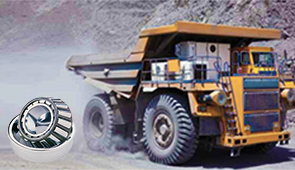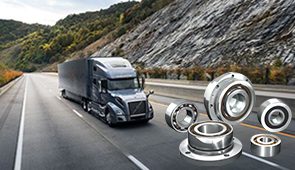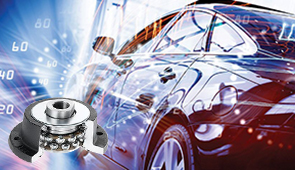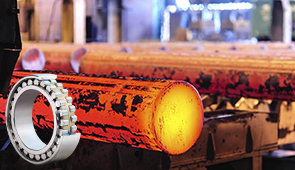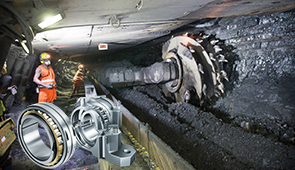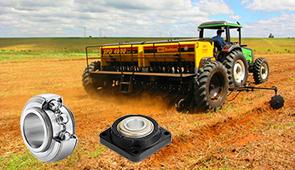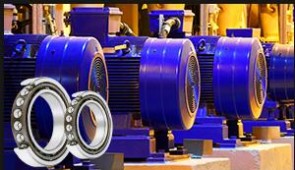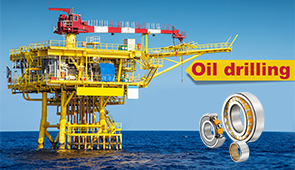Understanding Bearings: Functions, Types, and Applications
Bearings are an essential component in countless machines and systems, facilitating smooth, efficient motion while managing friction and load. Whether it’s the intricate mechanisms of aerospace technology or the everyday functionality of household appliances, bearings play a crucial role in ensuring reliability and performance. Understanding the different types of bearings, their specific functions, and where they are applied can provide valuable insights into mechanical engineering and design. This article aims to explore the fundamentals of bearings, discuss their various classifications, and examine their practical applications across industries, offering a comprehensive overview for professionals and enthusiasts alike.
What is a bearing, and How Does It Work?
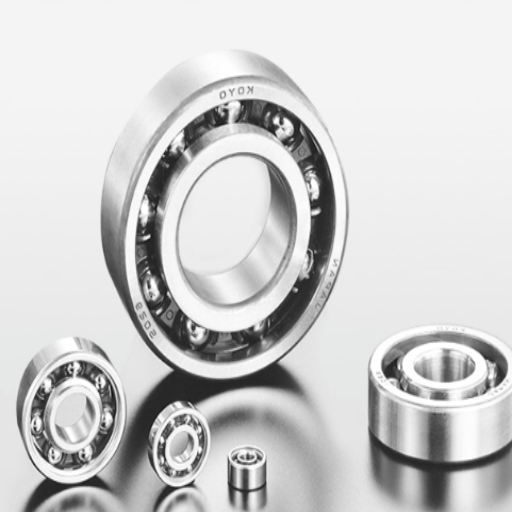
Functions of Bearings in Machinery
Bearings greatly reduce the frictional impacts on motion and support loads enabling movement with efficiency and precision. They modulate smooth motion while supporting loads that allow parts and components to rotate and move linearly and with more efficiency and precision. Bearings drastically mitigate mechanical damage to parts since, without them, the system would show faster degradation and eventual failure. Their performance strongly correlates with the lifespan and the reliability of machinery.
Furthermore, bearings carry and distribute the load. Supporting radial, axial or a combination of both loads all depend on bearing design structures. For example, ball bearings offer support for light to moderate radial and moderate axial loads whereas roller bearings provide support for heavier radial loads. The use of the appropriate bearing type will optimize machinery performance and avert stress on parts and components.
This enables machines to operate without sounds and vibrations, enabling them to operate at peak efficiency. Highly specialized materials used to construct bearings allow them to achieve precision tolerances that make them capable of enabling machinery to operate with reduced vibrations and noise. Such machines include but are not limited to industrial turbines to automotive engines, and their unmatched operational durability makes them indispensable.
How Bearings Reduce Friction
Bearings lessen friction by providing a smooth surface for two moving parts to either slide or rotate with minimal opposition. This is accomplished by converting sliding friction, which is the friction that occurs when two interfaces move over each other, to rolling resistance which is lower in comparison. Energy loss caused by friction is kept to a bare minimum with this configuration which improves the performance of the mechanical systems.
In addition, the use of lubricants slows down friction in a bearing system. Lubricants create a thin film between the bearing parts, which prevents wear as a result of friction, and direct contact between the metal is not allowed. Lubricants further ensure that their temperature does not increase excessively during the movement, and therefore, the bearing can withstand substantial strain while remaining operational.
Bearing construction also aids in the reduction of friction. The way the bearings are made on the friction components, which includes materials, the geometry, and bearing surface material, has been balanced for optimal efficiency. For instance, ball bearings have parts shaped as spheres, which allow smooth rolling motion and are called ball bearings, while roller bearings have larger surfaces that effectively distribute contact pressure in comparison to load turns.
Inner and Outer Ring Components
Both the inner and outer rings are parts of a bearing whose elements move around and serve as a frame. The inner ring is attached to the shaft, so it turns with it, while the outer ring does not turn and is usually placed in the seat of the bearing. These rings form regions in which rolling bodies, like balls or rollers, move along the raceways.
Manufacturers use high-strength materials, such as chrome or stainless steel, to make the inner and outer rings for them to resist high operational loads and environmental-caused stress. The materials undergo heat treatment processes, which increase their hardness, making them more resistant to loss, deformation, weakening, and overuse. Also, the addition of precise machining during manufacturing further refines the surface of the raceway, increasing smoothness and therefore reducing friction, ensuring that and rotates freely.
Fulfilling certain designs for specific use cases require customized design and load adaptation. Having different types of variations in ring dimensions, structure, and materials makes it possible for use in fast industrial machines, to heavy machinery dealing with radial and axial loads. This greatly shows how inner and outer ring parts increases performance efficiency and enable engineering adaptations in bearing optimization.
Different Types of Bearings
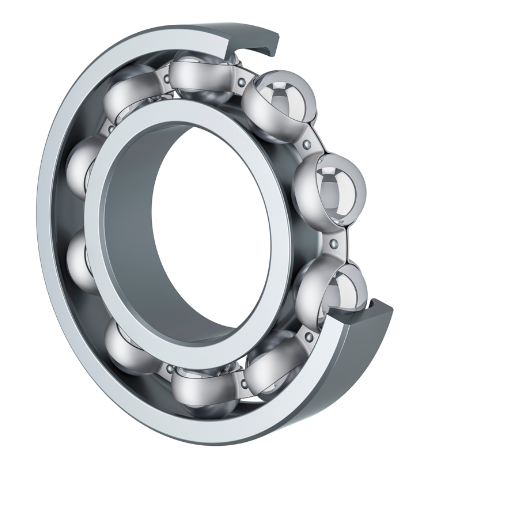
Ball Bearings vs. Roller Bearings
There is point contact and line contact. The latter is shared by roller bearings for heavy load, low speed scenarios, while ball bearings have point contact with high speed, low load scenarios.
|
Feature |
Ball Bearings |
Roller Bearings |
|---|---|---|
|
Contact Style |
Point |
Line |
|
Weight Support |
Light to Medium |
Heavy |
|
Rotation Speed |
Fast |
Moderate |
|
Resistance |
Low Friction |
Medium Friction |
|
Strength |
Lower for Heavy Load |
Higher for Heavy Load |
|
Alignment Flex |
High |
Low |
|
Uses |
Motors, Tools |
Machinery, Axles |
|
Form Factor |
Small |
Large |
|
Upkeep |
Minimal |
Moderate |
Exploring Plain Bearings and Sleeve Bearings
Plain bearings, also referred to as sleeve bearings, do not utilize rolling components, relying instead on the sliding motion between two surfaces. A plain bearing supports a shaft under load by reducing friction through lubrication, even when stationary. Unlike ball or roller bearings, plain bearings have a simple and compact structure and operate quietly. To withstand wear and tear and changing conditions, these bearings are made out of bronze, graphite, plastic, or composite materials.
Of all the plain bearings’ benefits, the most remarkable one is operational efficacy in dusty, dirty, or highly corrosive environments. Exposed to low speed- high load scenarios plain bearings work exceptionally well while other bearings fail. Their optimized self-lubricating design sealed design means less contamination risk while performing under high industrial demand. Without the risk of damage, plain bearings accommodate slight shaft misalignment, which helps to shift the alignment flexibility into a superior category.
The straightforward design and low cost of plain bearings appeal to many different situations. For instance, like in agricultural machines, automotive suspensions, or in heavy industrial machinery, these products perform exceptionally well with very little needed upkeep. Their capability to endure difficult circumstances without significant deterioration and maintain dependability confirms their value in contemporary engineering and design frameworks.
What are the Applications of Bearings?
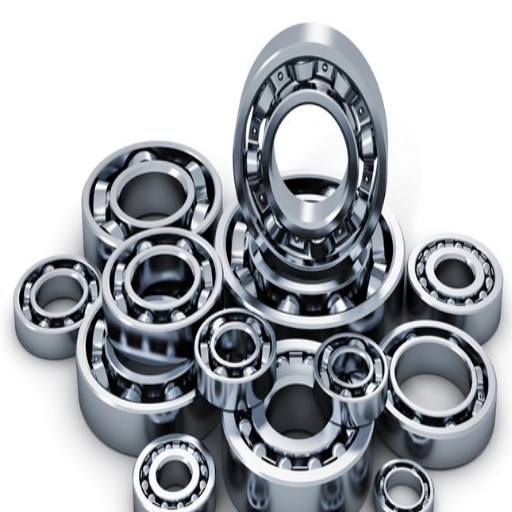
Bearings Use in the Automotive Industry
Bearings optimize performance, efficiency, and durability at every level in a vehicle, exemplifying their importance in the automotive industry. Because bearings can significantly reduce friction while also supporting loads, they ensure the smoother operation of the various components of a vehicle, increase the resitance to wear, and improve energy consumption.
- Wheel Bearings: Wheel bearings are important in ensuring that the movement of the vehicle’s wheels is unhindered, since they reduce friction between the axle and the wheel hub. Also, these bearings are responsible for the support of both radial and axial loads which ensures that the vehicle remains stable. The reduction of friction by high performance wheels makes fuel consumption more efficient and enhances precision of driving too.
- Transmission Bearings: These bearings are important in the reduction of friction in between the gears and the shafts with which these gears are fastened. They enable torque transmission to be done efficiently. It is possible for the smoothness of gear shifting to be enhanced and also the durability of the parts while operating under high speed and torque, a feature of modern vehicles, is maintained.
- Engine Bearings: The main bearings and connecting rod bearings, which are examples of automobile bearings, engine bearings, serve to enable support for the crankshaft and its motion. Rotational movement of the crankshaft has to take place smoothly. Extreme pressure alongside extreme temperatures are what these bearings are subjected to, which means that the materials and lubrication used have to be advanced to maintain the performance and longevity of the engine. Steering Gear Bearings
- Steering Gear Bearings: Steering bearing mechanisms aid in the correction of the vehicle and greatly assist with ease of use by lowering the level of friction present in the steering column and rack. Ball and taper roller bearings are used in modern day vehicle designs to increase ease of handling and sustain increased levels of wear over an expanded range of operational conditions.
- Differential Bearings: These bearings are used in the vehicle’s differential system to grant the wheels independent rotation while distributing the torque. This performs an important function in stability degradation during a turn and wear during the constant load and speed changes.
All of these functions demonstrate the importance of these bearing systems if optimal performance, reliability, and safety are to be attained in automotive engineering. Bearing technologies have evolved to address the needs of modern vehicles due to advancements in material science and manufacturing precision.
High-Speed Applications of Bearings
Bearings adapted for high-speed applications are developed to endure expansive degrees of rotational range and still retain their fidelity, strength, and durability. They are also used in aerospace, automotive, construction, and other machinery where their rotational speed is at maximum levels. Typical examples are angular contact ball bearings and ceramic hybrid bearings which also have low friction and suffer less thermal expansion when stressed, as well as under abrasion.
A key element affecting the operation of high-speed bearings is lubrication. The right lubrication helps in controlling the wear rate and does not use excessive heat. This guarantees the reliability of the equipment during its sustained operational life. There are more sophisticated devices like synthetic oils or even greases containing nanoparticles that are beginning to be used for the harshest of high-speed conditions.
The choice of materials is pertinent for the design of a bearing. The best choice is those made of modern high-strength steel alloys or even ceramic parts. These are much more durable and suffer less change in shape under stress. Furthermore, additional smoothing techniques such as superfinishing and micro-polishing are applied to the surfaces to almost negate any vibration, which would allow the bearings to be used under extreme rotational speeds.
The combination of smart systems and sensors invigorates the development of high-speed bearing technologies even further. Such bearing technologies can facilitate real-time monitoring of temperature, vibration, rotational speed, and other relevant parameters, which allows maintenance to be performed in anticipation, instead of on a reactive basis, resulting in minimal unscheduled downtimes. Data-driven advancements of this nature are exceptionally beneficial in critical applications, such as jet engine turbines, high-speed rail systems, and electric vehicle powertrains, because performance and reliability are the most valued attributes in these systems.
Role of Bearings in Heavy Machinery
Bearings are crucial components in the functioning of heavy machinery as they support axial and radial movements and control the friction generated between machine components. In a complex industrial setting, they are essential for the reliable operation, protection, and durability of the machinery. The engineering and choice of bearings involves many critical parameters such as bearing type, structure, load capacity, alignment accuracy, material toughness, and operational speed.
- Load Distribution: Bearings are supporting mechanical components tasked with the function of transferring all radial and axial forces to different sections of the device as structurally rotor shaft evenly. This guarantees no mechanical part undergoes excessive forces that would outpace its physical limits, which would otherwise result in early deterioration or failure of the system components. Spherical roller bearings, for instance, are suitable for high radial load applications as they can take some amount of alignment offset, which makes them appropriate for severe duty operations.
- Reduced Friction: Friction is reduced by bearings remarkably for moving part interfaces, thereby enhancing the overall operational effectiveness of machines. It is clear small-sized vehicles as well as heavy duty and high-precision machinery will greatly benefit from lower friction levels.
- Critical Alignment Features: Bearings guarantee that the misalignment of rotating or moving parts never exceeds specified limits. This precision is extremely crucial in hydraulic pumps and industrial gearboxes, as even the slightest misalignment can result in serious inefficiency and catastrophic mechanical failure.
- Vibration Damping Features: Bearings are also manufactured to effecitively dampen and absorb vibrations caused due to operational imbalances or external forces. In construction equipment like cranes and excavators, vibration-damping bearings enhance operator comfort while minimizing material fatigue.
- Increased Operating Service Life: Extreme conditions such as high temperatures and pressurized contaminants demand the use of high-grade materials like chrome steel or ceramic composites. Bearings designed for such environments endure operations in steel manufacturing and mining, where reliability is non-negotiable.
Bearings do this and much more, defining the heavy machinery industry’s efficiency and reliability, demonstrating how crucial they are to sustain industrial operations.
Choosing the Right Bearing Material
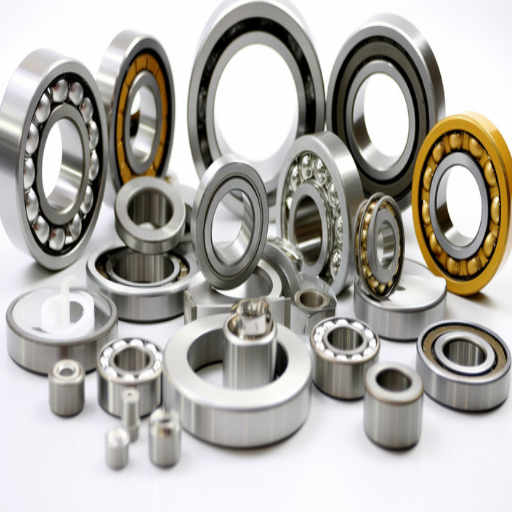
Common Materials Used in Bearings
Picking the right material for manufacturing a bearing is very important since it affects the performance, lifecycle, and applicative dependability. Chrome steel, stainless steel, and ceramic are some materials that are used for industrial operations and undertakings, but each has its unique use case.
- Chrome Steel (SAE 52100): Chrome steel is largely popular because of its use in making ball and roller bearings. It has a high concentration of carbon and chromium which further helps in accomplishing intense hardness, strength, and capability of withstanding wear and tear. For applications that function under reasonable loads and temperatures, it proves to be useful; however, its ability to resist rest is low.
- Stainless Steel: Bounding regions that are moist, chemical ridden, or experience harsh temperatures is no challenge for stainless steel bearings. They are resistant to rust which makes their use favorable in these scenarios. They possess commendable strength to resist annihilation and are capable in their servicable life.
- Ceramic: In conditions like high speed, high temperatures, or environments that require electrical insulation, ceramic materials are leveraged. These include combat nonconductive nitride and zirconia which assist porcelain. Making them ideal instruments in specialized fields like medical equipment or aerospace, these materials excel in performing under extreme stress as they are lighter yet harder than steel, require little to no friction, and do not conduct electricity.
- Bronze and Brass: Bronze and brass bearings are valued greatly due to their hassle free self lubricating function and their ability to resist metal welding. These materials are typically used in bushings and sleeve-type bearings which are more suitable for moderate level rotatory tasks like pumps or turbines at low speeds.
- Polymers and Composites: Advanced light weight polymers and composite materials are gaining popularity in areas requiring minimal friction, further exposed to stress. PTFE (polytetrafluoroethylene) and PEEK (polyether ether ketone) greatly ease maintenance as they have superb endurance against wear and perform best when processing foods or working in automotive engineering, precision-driven industries.
Every material has different properties answering to certain demands, ranging from performance to endurance to functionality to stress requisites. Anticipating all operational and mechanical conditions, functions with maximum efficiency encryption, selecting bearing material is crucial.
Advantages of Composite and Plastic Bearings
Comparatively, plastic and composite bearings are not as popular as their metal counterparts, however, they do provide a few distinct features. One of the features that stands out is that they are not susceptible to corrosion. They do not corrode or oxidize even in the presence of moisture, chemicals, or any other antagonistic environment. This adds to their value in other industries like food processing, pharmaceuticals, and marine hygiene since durability is of utmost importance in those fields.
These bearings can operate without lubrication, this being another great edge. A good number of composite and plastic bearings have self-lubricating materials like PTFE (polytetrafluoroethylene) which helps in smoothly reducing friction. Maintenance is kept to a bare minimum since there is lower risk of contamination which extends the part’s service life further. This durability translates to improved cost savings in the long run.
These materials have an improved strength-to-weight ratio, significantly reducing system mass while simultaneously maintaining skeletal stability. Moreover, impact absorption as well as vibration dampening is further enhanced ensuring lower noise emission and smoother operation. This offers numerous advantages in precision engineering and automotive applications where silence and shear efficiency is critical.
Developments in polymer technology have made it possible to customize materials for specific tasks. For example, adding fibers improves thermal stability, resistance to wear, and Load-bearing capabilities. These features make composite and plastic bearings suitable for many conditions, showcasing their dependability across numerous sectors.
Benefits of Using Magnetic Bearings
The magnetic bearings are used on systems that rotate and have parts in them that need precision placement and movement. Mostly, they are used in technological applications and mouth robotics. Here are 5 factors why choosing this type of bearing is the better choice:
- Working without making contact with each other: Magnetic bearings have the capability of using levitation forces to suspend rotating parts. This discrepancy is that there would not be any rubbing contact. Without contact, there will be very little rubbing Force, always rubbing wear, and life of the entire system will exceed that of traditional bearing systems.
- Not spending much time on maintenance: Since there is no contact between the moving parts, there is virtually no need for lubrication; however, when compared with other dynamic systems, especially in cases of peculiar angles, the maintenance cost incurred is significantly lower. The life period cost of devices without the Need for lubrication is reported to be around 20% lower in cost when compared to the rest of the devices throughout their working life.
- Very high rotational speed: The absence of mechanical friction means magnetic bearings can allow for extremely high speeds of rotation. Devices like turbines, compressors, or flywheels where the speed surpasses 50.000 rotations per minute (RPM) are traditionally accepted, as long as there is no performing degradation.
- Precision and Stability: At aerospace and high-level manufacturing sectors magnetic bearings are a necessity due to their high accuracy standards as they provide unmatched precision and stability. They preserve micrometer-level positioning accuracy throughout dynamic operational conditions.
- Vibration Reduction and Noise Elimination: In medical equipment or advanced labs where minimizing vibration and noise is essential, magnetic bearings are advantageous as they eliminate operational noise and vibrations caused by friction in traditional bearings.
Integrated, these advantages showcase why magnetic bearings are foundational to advanced engineering systems while underscoring their unmatched versatility and efficiency.
Understanding Bearing Components
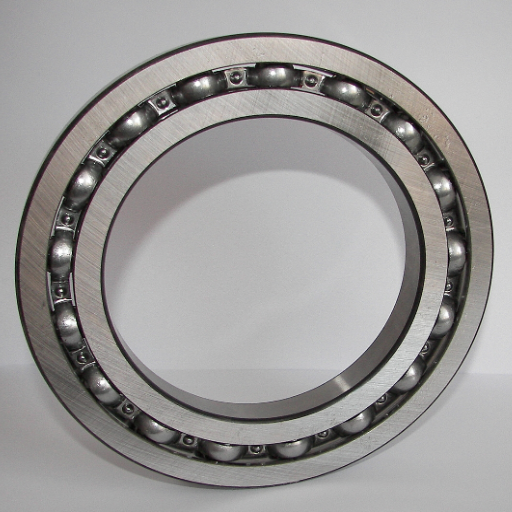
Role of Rolling Elements in Bearings
Rolling elements play a crucial role in a bearing’s function as they are the primary contact mechanism responsible for frictional contact. These components can take the shape of spheres, rollers, or needles, and are masterfully crafted to evenly spread the loads across the bearing while also keeping the inner and outer races apart. Such an axial distance aids in the reduction of wear, enhancing life, and ensuring smooth rotation of the mechanical systems.
The selection of rolling elements is largely dictated by load capacity, operational speed, and environment. For instance, ball bearings are perfect for moderat radial and axial loads at high rotational speeds. On the other hand, cylindrical rollers are more suited for greater radial load applications. Spherical rollers are best used for systems that experience shaft misalignment due to their self-alignment abilities.
The design and the effectiveness of rolling elements is greatly influenced by the manufacturing process and material selection. Commonly used materials for rolling elements are high-grade steel and advanced ceramics. Such materials ensure high hardness, strength, and resistance to abrasion, rust, and erosion. Advances in material science has ensured efficiency and reliability of modern bearing systems.
Importance of Lubricants in Bearing Life
Lubricants serve an important purpose of increasing the lifespan and bearing performance of a system. Proper precaution minimizes the friction between surfaces that either roll over or slide on each other, which in turn reduces wear and heat generation.
Lubricants also offer shielding of the surface to surface contact which is crucial during applications subjected to high loads. Bearings without effective lubrication are prone to overheating, surface fatigue, and worse of all, failure.
Different environmental conditions also contribute further. Oils, dry lubricants, and greases serve specific purposes and have defined roles according to their load carrying capabilities, thermal stability, and viscosity. For example, in extreme temperatures synthetic lubricants are preferred due to their chemical stability.
Ignoring maintenance, along with the monitoring of lubricant, can lead to further degradation of the efficiency of the bearing, and increased wear. Contaminants like lubricant degrading particles, dirt, and water contribute a lot here. Current CBM monitoring technologies allow real-time lubricant grade analysis, which helps in the formulation of predictive maintenance strategies in order to avert catastrophic failures.
Hence, by employing appropriate lubrication methods through selection and optimal maintenance application, an industry stands to gain improved system performance, improved efficiency, and reliability of the bearings.
Design Considerations for Bearing Surfaces
The design strategy in bearing surfaces impacts the machine parts’ effectiveness and their longevity throughout the varying operating conditions one might put them through. Material selection, on the other hand, must look at the wear the material will sustain, the frictional force it will produce, and the amount of weight it can bear over long periods. There is also the use of polymer composites and hardened steels, while some would turn to ceramics, which depends on the environment and operational requirements.
The Rz roughness value of a bearing surface, especially in mechanical engineering fields, needs to be balanced so that sufficient lubricant retention while avoiding frictional losses can be achieved. Polishing techniques lead to very smooth surfaces, causing wear, while rough techniques cause increased wear in high-speed applications. To increase bearing and shaft efficiency, extension of life and decrease in serviceability, profiling of bearing surfaces is a must as it enables to bear better stress concentration and load distribution.
Better controlled strategies which improve the entire system as lubrication grooves and reservoirs along with relief bores are the ones needed to be used. The lubricant able pocket to be created with the aid of micro grooves promotes greater flow of lubricants, less local heating and separation of the contact surfaces. These changes are beneficial in cases of dipping into high temperatures or dealing with filler laden fluids.
Using tools of computational simulation like finite element analysis (FEA) allows engineers to anticipate how a design will perform under differing loads and boundary conditions. The further progress of tribological research helps with the custom tailoring of bearing designs, thus enabling them to be optimized for specific industrial uses like aerospace, automotive, or heavy machinery.
Frequently Asked Questions (FAQ)
Q: What is a bearing, and what is its primary function?
A: A bearing is a machine element designed to reduce friction between moving parts, support loads, and facilitate the desired motion. Bearings are typically used to allow constrained relative motion between two or more parts, often enabling rotational or linear movement.
Q: What are the different bearing types and their applications?
A: There are several different bearing types, each suited for specific applications. Common bearing types include deep groove ball bearings, thrust ball bearings, needle roller bearings, and journal bearings. These bearings are designed for various applications such as supporting radial loads, axial loads, and combinations of both.
Q: What is a rolling bearing, and how does it differ from a journal bearing?
A: A rolling bearing uses rolling elements like balls or rollers to maintain the separation between bearing races, thus reducing friction. In contrast, a journal bearing, also known as a plain bearing, relies on sliding contact and usually requires lubrication to minimize friction between the shaft and bearing surface.
Q: How do thrust bearings differ from other bearing types?
A: Thrust bearings are specifically designed to support axial loads, which are forces parallel to the shaft. Common types of thrust bearings include thrust ball bearings and thrust roller bearings. They are often used in automotive, marine, and aerospace applications where axial load support is critical.
Q: What are deep groove ball bearings, and where are they commonly used?
A: Deep groove ball bearings are the most common type of rolling element bearings. They are versatile and used in a wide range of applications due to their ability to support radial and axial loads and accommodate high-speed operation. Common applications include electric motors, pumps, and gearboxes.
Q: What are needle roller bearings, and what advantages do they offer?
A: Needle roller bearings use cylindrical rollers that are much longer than their diameter. They offer a high load-carrying capacity and are suitable for applications with limited radial space. They are commonly used in automotive transmissions and other machinery requiring compact design solutions.
Q: Why are sealed bearings used, and what benefits do they provide?
A: Sealed bearings are lubricated bearings that come with integrated seals to prevent contamination and retain lubricant. They offer the advantage of reduced maintenance and longer service life by protecting the bearing from dirt, dust, and moisture.
Q: What are the characteristics of linear bearings?
A: Linear bearings are designed to provide low-friction linear motion along a guide rail. They are used in applications such as CNC machinery, robotic arms, and precision instruments. Linear bearings may include rolling elements or be based on sliding contact, depending on the specific design requirements.
Q: Can you explain the role of wooden bearings in bearing applications?
A: Wooden bearings are a rare type of bearing used historically or in specific applications where metal bearings are not ideal. They are typically used in environments where lubrication is challenging or where the bearing must be non-conductive or non-magnetic.
Q: How do rolling element bearings contribute to reduced friction between moving parts?
A: Rolling element bearings, such as ball and roller bearings, reduce friction by replacing sliding motion with rolling motion. The rolling elements create a small contact area and reduce friction compared to plain bearings, allowing for smoother operation and reduced wear.
UCTH213-40J-300 with Setscrew(inch)
CNSORDERNO: Normal-duty(2)
TOGN: UCTH213-40J-300
SDI: B-R1/8
SD: 2 1/2
UCTH212-39J-300 with Setscrew(inch)
CNSORDERNO: Normal-duty(2)
TOGN: UCTH212-39J-300
SDI: B-R1/8
SD: 2 7/16
UCTH212-38J-300 with Setscrew(inch)
CNSORDERNO: Normal-duty(2)
TOGN: UCTH212-38J-300
SDI: B-R1/8
SD: 2 3/8
UCTH212-36J-300 with Setscrew(inch)
CNSORDERNO: Normal-duty(2)
TOGN: UCTH212-36J-300
SDI: B-R1/8
SD: 2 1/4
UCTH211-35J-300 with Setscrew(inch)
CNSORDERNO: Normal-duty(2)
TOGN: UCTH211-35J-300
SDI: B-R1/8
SD: 2 3/16
UCTH211-34J-300 with Setscrew(inch)
CNSORDERNO: Normal-duty(2)
TOGN: UCTH211-34J-300
SDI: B-R1/8
SD: 2 1/8









